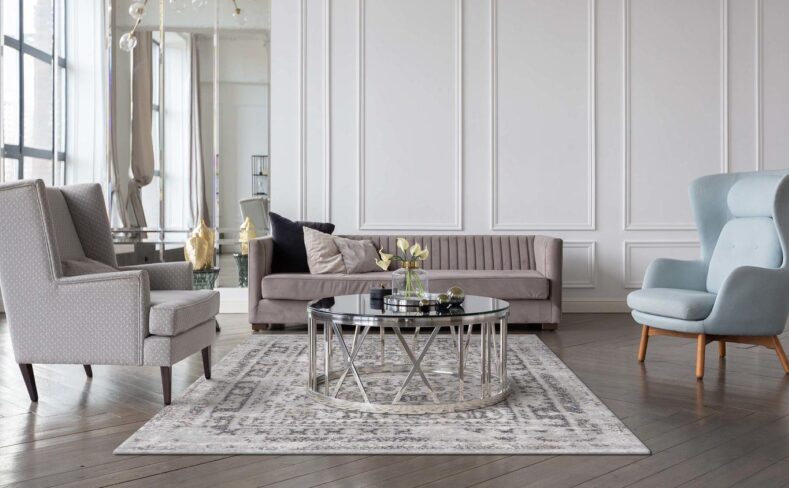
6 Best Wall Panel Materials
Modern ideas are changing the way we do things, and wall treatments are no exception. Wall paneling has revolutionized the home improvement market by replacing most traditional wall treatments such as wallpapering, painting and tiling.
Aside from the obvious cost-effectiveness, there are countless reasons why this relatively new wall treatment idea has enjoyed considerable popularity with consumers and interior designers alike – it’s easy to install, it’s a healthier a solution that stands the test of time, it provides enhanced aesthetics, hides uneven walls, is easy to clean and maintain, and can be reused.
Another major reason people turn to this wall treatment is that the panels used here come in a variety of shades, textures, finishes. Therefore, this ideas guide aims to help you understand which materials are suitable for wall panels by taking a quick look at some of them.
I. What are the materials for making wall panels?
Suitable materials for paneled walls are:
– Natural wood
– Medium-density fiberboard
– Particle board
– Fabric panel
– PVC panel
– Gypsum board
Let’s take a look at the advantages and disadvantages of each material so that choosing the ideal one for your space becomes simple and easy.
1. Natural wood
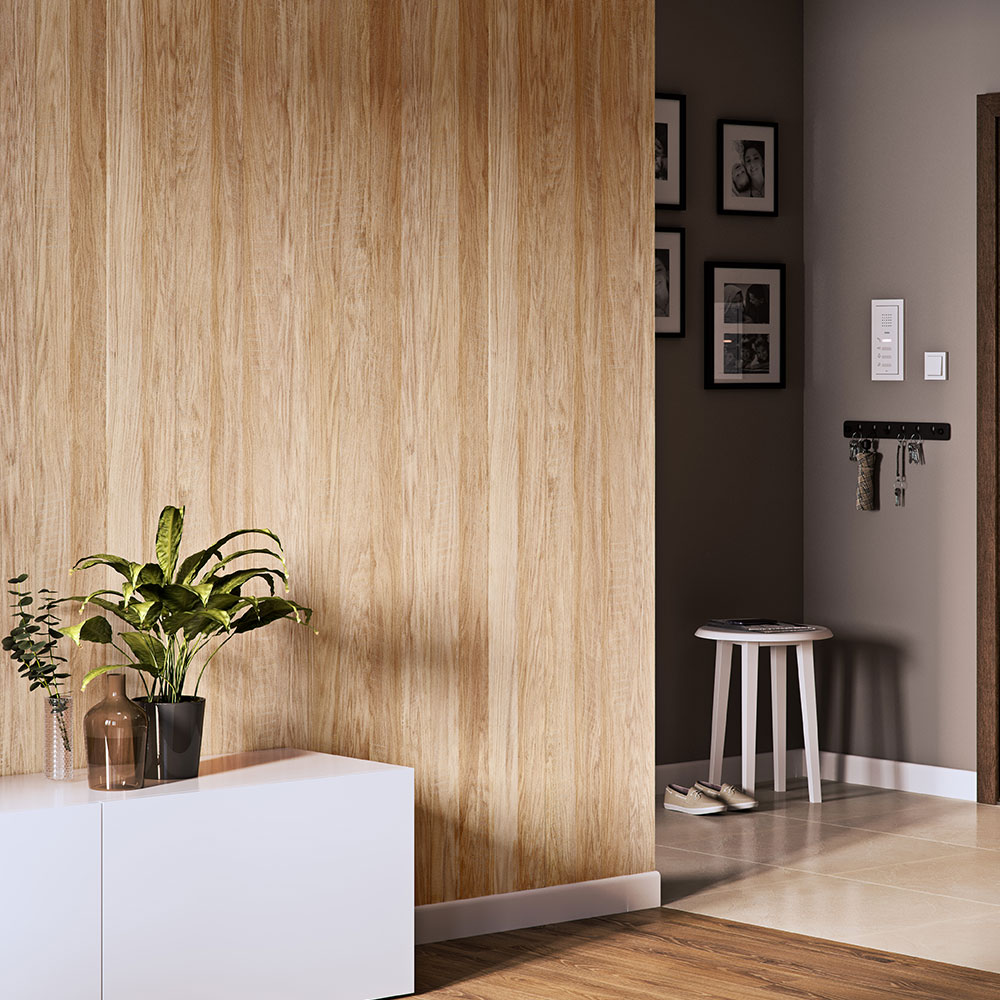
Source: https://www.aps-group.co.uk/wall-panelling-classic-natural-wood-panels/
What is natural wood wall panel?
As can be seen from the name, the natural wood slat wall panel is made of pure wood instead of solid wood composite or solid wood veneer. Because of the high cost of natural logs, the price of natural wood slat wall panel is much higher than other siding.
What are the features of natural wood?
The products made of natural wood are more high-end and tasteful. Its pure natural texture and color make the interior look simple and elegant. Artificial decoration materials cannot replace the comparable beauty. Not only are the requirements high on materials, but also high requirements on craftsmanship.
What are the advantages and disadvantages of natural wood?
Advantages of natural wood |
Disadvantages of natural wood |
| You have a wide variety of woods to choose from: such as oak, cedar, maple, alder, rosewood, teak, mahogany, ebony and more. | Decorative wood panels for walls have been used in interior design for centuries, so many people associate it with a dated look. It doesn’t work well with modern furniture, minimalist or appliances with metallic accents. |
| It is available in different sizes and shapes, offering a high degree of customization and allowing for many design explorations using different textures and patterns. | Solid wood is easy to deform. Due to the uneven temperature and humidity of the environment and the influence of moisture, the clapboard will crack and deform due to external environmental factors if it is used for too long. |
| Panels made of natural wood can be easily painted, polished or stained to match a room’s theme or just for a new look. | Panels made of natural wood are neither waterproof, fire-resistant, nor corrosion-resistant, and are susceptible to mildew. |
| Made from environmentally friendly natural logs, there is no pungent smell. | Without chemical treatment, they are vulnerable to termite attack. |
| They have good heat and sound insulation. Constant temperature environment, warm in winter and cool in summer. | Over time, they will lose their natural moisture. This will cause the panels to shrink, creating noticeable gaps and, in severe cases, the panels may even crack. |
| The wall wood paneling can be fixed directly to the wall surface or to the grid of the frame, and the installation is simple and easy. | The wood can also warp and bulge if the room temperature fluctuates wildly, which can lead to costly repairs. |
| These natural wall wood panelings are easy to repair and replace. | The cost is too high. Due to the use of solid wood technology, its material cost is not at the same level as that of traditional paint-free boards. |
2. Medium density fiberboard (MDF)
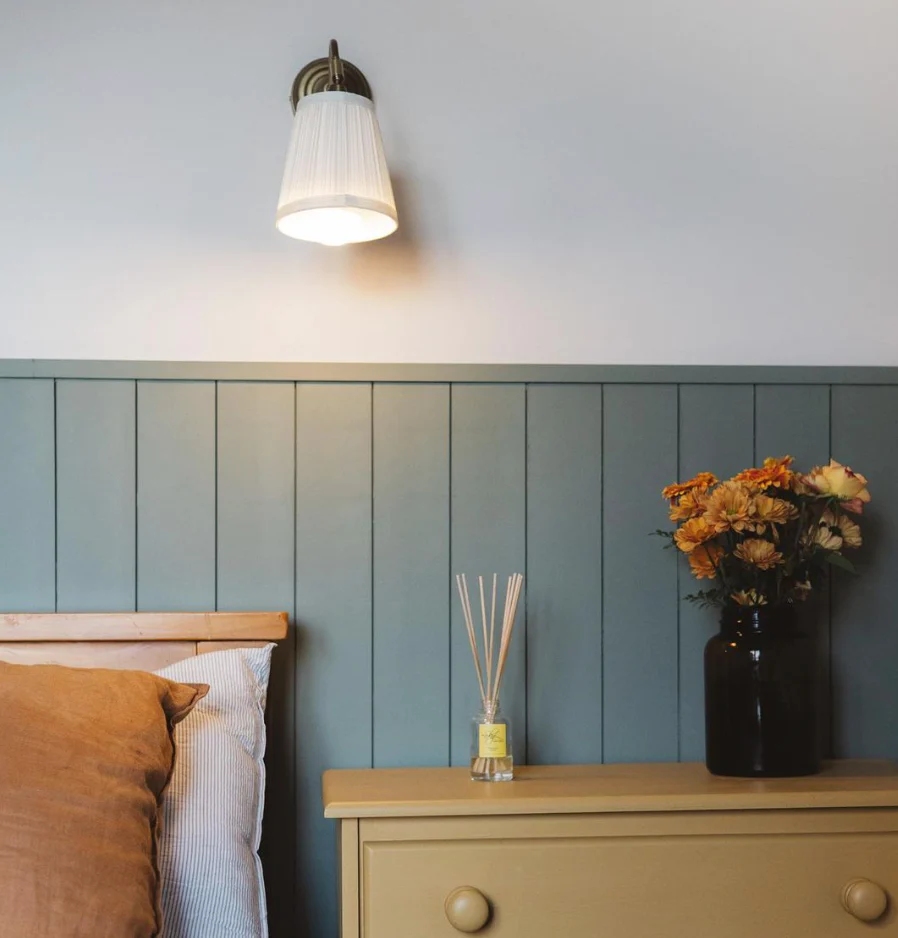
Source: https://www.roomixdiy.com/products/mdf-trim
Wood veneers and laminates can be easily joined to MDF to give it a natural wooden look. Therefore, it can be a good substitute for natural wood without affecting the appearance of natural wood. You can get the look of natural wood without spending money on real wood.
Although the moisture resistance of the density board is poor, the density board surface is smooth and flat, the material is fine and dense, the performance is stable, the edge is firm, and it is easy to shape, avoiding problems such as decay and insects. It is better than particle board in terms of bending strength and impact strength, and the surface of the board is very decorative, which is even better than the appearance of solid wood furniture.
MDF fits into most people’s budget. If you’re new to MDF lumber, we’ll walk you through what it is and we’ll discuss the pros and cons of MDF here.
What is MDF?
Density board is made of wood fiber or other plant fiber, prepared by fiber, pressurized synthetic resin, and pressed into board under the condition of heating and pressing.
What are the features of MDF?
The density board surface is smooth and flat, the material is fine and dense, the performance is stable, the edge is firm, and the surface of the board is decorative, but the moisture resistance of the density board is poor. The nail-holding force of MDF is worse than that of particleboard. If the screws loosen after tightening, it is difficult to fix them at the same position.
What are the advantages and disadvantages of MDF?
Advantages of MDF |
Disadvantages of MDF |
| It is easy to carry out finishing processing, and paints of various colors can be applied evenly, and it is the preferred substrate for paint effects. | MDF has no natural wood grain. |
| Is an attractive decorative board available in different thicknesses, grains and finishes. | Since MDF is made of fine grain, it does not hold nails and screws well. |
| Easier to shape than solid wood, easier to cut and carve, easy to achieve 3D designs. | MDF has poor nail-holding power. Because the fibers of density board are very broken, the nail-holding power of density board is much worse than that of solid wood board and particle board. |
| All kinds of veneer, printed paper, PVC, glued paper film, melamine adhesive paper and light metal sheet are all veneered on the surface of MDF. | The density board has a large expansion rate when it encounters water, is not moisture-proof, and has a large deformation. The long-term load-bearing deformation is larger than that of the homogeneous solid wood particle board. |
| MDF has no knots that can stain the surface of a part or make it difficult to connect components. Easy to cut and drill without damage. | Compared to natural wood, MDF is weak and cannot withstand extreme pressure. It cracks or splits easily under extreme stress. |
| Using 100% recycled material, which means no trees have been cut down, it is environmentally friendly. | In most cases, it requires a thick plywood base, and MDF is time-consuming and labor-intensive to install. |
| Unlike natural wood products, MDF does not expand and contract in heat and humidity. | MDF tends to be high maintenance, and if the MDF is chipped or cracked, it cannot be easily repaired or covered. |
3. Particle board
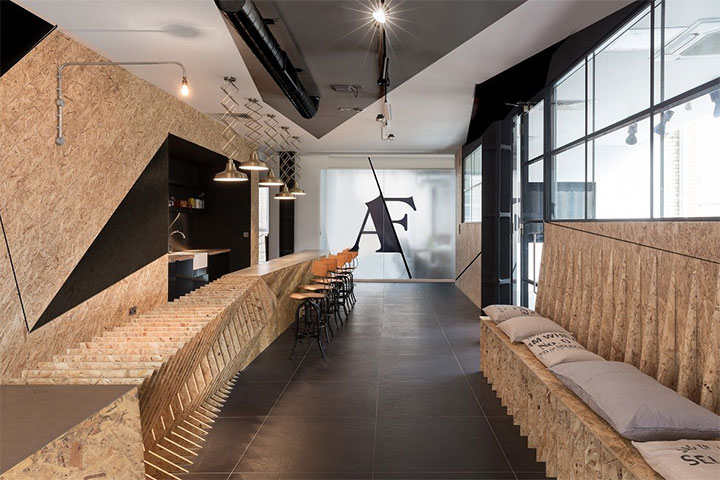
What are the advantages and disadvantages of particle board?
Advantages of particle board |
Disadvantages of particle board |
| The surface of the particle board is smooth, the texture is realistic and beautiful, the bulk density is uniform, the thickness error is small, and various veneers can be carried out. | The interior is a granular structure, which is not easy to cut and mill. |
| The interior is granular with a cross-staggered structure, the performance of each part is basically the same, and the lateral load-bearing capacity is good. | It is easy to cause sharp teeth when cutting boards, so some processes have high requirements for processing equipment, and it is not suitable for on-site production. |
| It has good sound absorption and sound insulation performance, heat insulation and sound absorption. | Rough edges, easy to absorb moisture, subject to fluctuations in temperature and humidity, so use only in dry areas. |
| In the production process of particle board, the amount of glue used is small, and the environmental protection factor is relatively high. | The difference in quality between different products is relatively large, and it is difficult to distinguish. |
| Since particle board is readily available, it is readily available. It is relatively cheap. | The bending resistance and tensile resistance are relatively poor, and you can’t help but bend and pull vigorously. |
4. Fabric panel
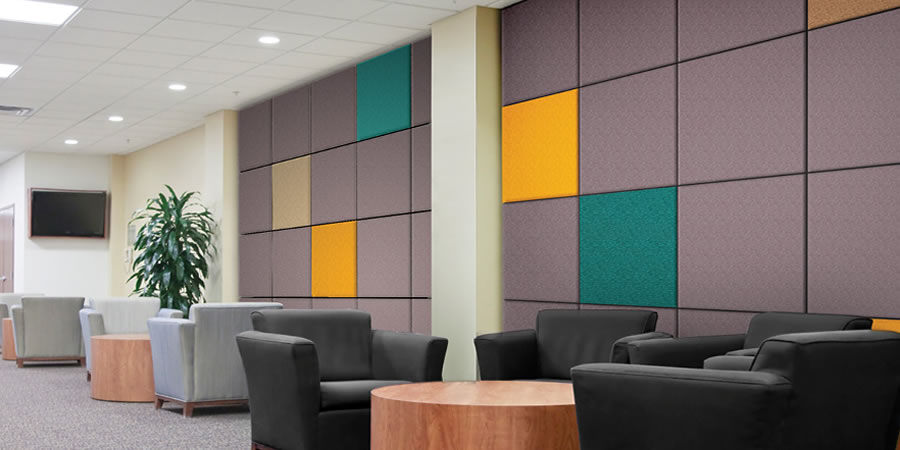
Source: https://dextroacoustics.com/fabric-acoustic-panels/
What are the advantages and disadvantages of fabric panels?
Advantages of fabric panels |
Disadvantages of fabric panels |
| It can be in any material such as natural or synthetic fabric, polyester, jute, leather, velvet, etc. | Extra care must be taken to prevent scratches and tears on the panels. |
| These panels give the walls a softer, smoother feel. | Difficult to clean and maintain. |
| They provide good sound insulation, so their preferred areas of use are theatres, auditoriums, etc. |
5. PVC panel
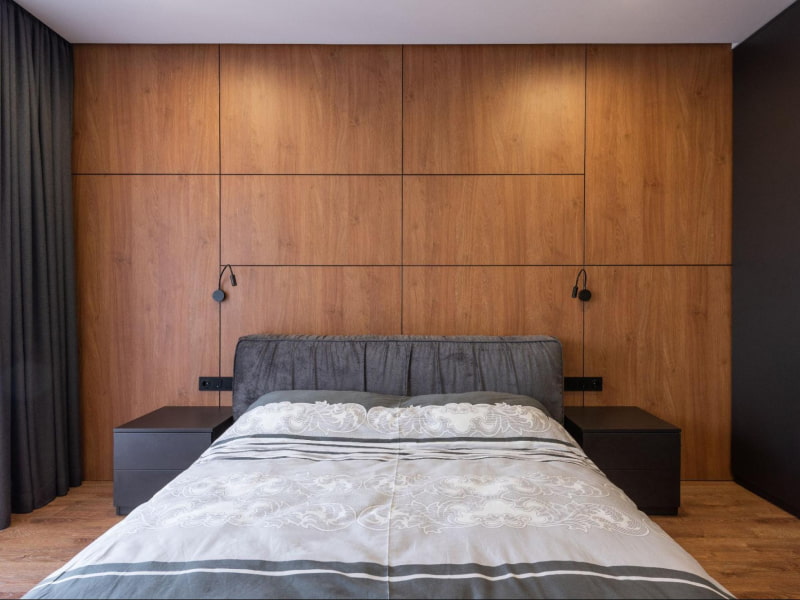
Source: https://www.beautifulhomes.com/magazine/spaces/bedrooms/pvc-design-for-bedroom.html
What is PVC panel?
Polyvinyl chloride board is made by adding stabilizers, lubricants and fillers to PVC. After mixing, extrude hard boards of various thicknesses with an extruder. PVC wall panelings have various specifications, colors and patterns, and are very decorative. They can be applied to the decoration of living room interior walls and ceilings. They are one of the decorative materials used in plastic materials.
What are the features of PVC panels?
PVC wall paneling is a new type of wall decoration material made of PVC material as raw material and manufactured by surface film technology.
At present, PVC wall panelings are gradually replacing traditional wall building materials. The appearance of wall panels can be shaped in a variety of ways. The most common methods are decorative techniques such as film and 3D printing.
What are the advantages and disadvantages of PVC panels?
Advantages of PVC panels |
Disadvantages of PVC panels |
| PVC wall panelings have many colors and 3D patterns, and the colors are rich, giving consumers more choices. | It will take up a certain amount of space, and it will be limited by the space during decoration. It is generally used in large apartments. |
| The appearance texture is very similar to solid wood, but compared with plastic wall materials, it has higher hardness and longer service life. | Difficult to maintain and easily damaged if not handled properly. If scratches occur, it is difficult to deal with. |
| In the production process, it has the same machinability as logs, which can be nailed, sawed, cut and drilled. Just use nails or bolts to fix the wall panels. | Chlorine gas will be released from PVC wall panelings over time. |
| Compared with logs, PVC wall panelings have more physical advantages, good stability, and are not prone to cracking, warping, twill, etc. in daily use. | PVC panels can be damaged by knocking and are not completely scratch resistant. |
| Extremely resistant to water and corrosion, it is easy to clean and maintain. | PVC panels are made of plastic and they can be damaged when exposed to heat. |
| Does not attract dust, so it is more suitable for rooms with dust allergies. | Very toxic when burned, so do not use in areas such as kitchens. |
| They are lightweight and quick and easy to install. | The price is more expensive. |
6. Gypsum board
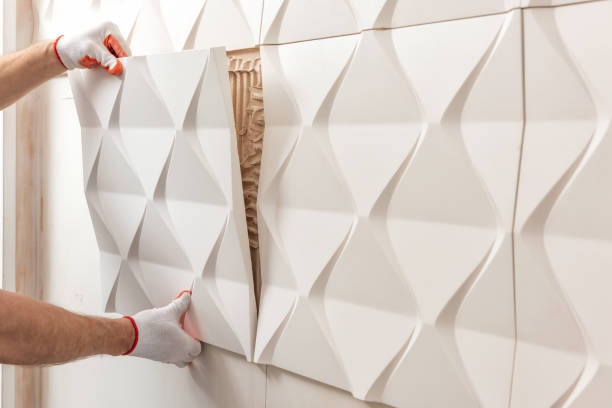
Source: https://www.istockphoto.com/gypsum-board-3d-wall-panel
What is ypsum wallboard?
Gypsum wallboard is made of natural gypsum, phosphogypsum and other main raw materials in place and various inorganic materials. It is one of the new lightweight panels that are currently valued for development. It has been widely used in internal lightweight partition walls and wall cladding panels, ceilings, sound-absorbing panels, ground-based panels and various decorative panels, etc.
What are the features of gypsum wallboard?
Gypsum board is a building material with light weight, thinner thickness, convenient processing, higher strength, sound insulation, heat insulation and fire resistance.
What are the advantages and disadvantages of gypsum board?
Advantages of Gypsum Board |
Disadvantages of Gypsum Board |
| It allows a lot of room for customization by employing a large number of textures (even 3D textures), paint colors, sizes and shapes. | The hardness is a little worse than that of brick walls, and the expansion rate is small. |
| Light weight and high strength. The weight is generally only 6-12Kg/㎡, which is only one tenth of that of ordinary brick walls. | They are subject to fluctuations in temperature and humidity. |
| It has good sound insulation, waterproof, heat insulation and other properties. | The gap is difficult to handle and easy to crack. |
We hope this article gave you all the details about the materials used for wall panels. Choosing a particular material will largely depend on your requirements and budget. So, what material do you use to inlay your walls?
You can continue to pay attention to Georg Panel, we will keep sharing various information about wall panels!
Quick Quotation



